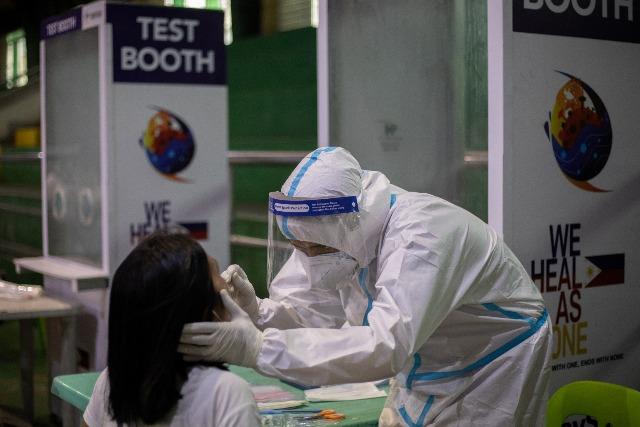OCTA Research: 12 NCR cities among top 15 areas with uptrend in COVID-19 cases

Twelve Metro Manila cities were among the top 15 areas with a “significant” upward trend in the number of new COVID-19 cases, the OCTA Research group said Friday.
In their latest monitoring report, the independent team of experts said Quezon City, Manila, Pasay, Makati, Parañaque, Taguig, Caloocan, Pasig, Malabon, Valenzuela, Marikina, and Navotas have been reporting a higher number of new COVID-19 cases.
Completing the list were the cities of Cebu, Mandaue, and Lapu-Lapu in Cebu province. However, Cebu City and Lapu-Lapu were considered “exceptions” as they both recorded a downtrend in new cases.
OCTA Research noted that Metro Manila, now classified as “high-risk,” averaged 1,546 new infections daily over the past week, bringing its reproduction number to 1.86, daily attack rate to 11 per 100,000 population, and positivity rate to 10%.
A reproduction number of 1 or higher indicates sustained COVID-19 transmission. The World Health Organization’s benchmark for the positivity rate is 5% or lower.
The overall hospital bed occupancy in the capital region also rose to 50% while the occupancy rate of intensive care unit (ICU) beds reached 65% as of March 10.
“Hospital occupancy exceeded 70% in Quezon City, Makati and Taguig. ICU bed capacity exceeded 70% in Taguig, Pasig, Mandaluyong, Las Pinas, Muntinlupa and San Juan. Cainta and Lapu-Lapu also had greater than 70% bed occupancy,” OCTA said.
The experts also said their latest projection showed that Metro Manila could have more than 4,000 new COVID-19 cases daily by the end of March.
Their earlier projection was that daily new COVID-19 cases in the region would reach 5,000 by March 31.
“It appears that the current trend is faster, as the region tallied nearly 2,000 cases on March 11, or 11 days earlier than projected. The faster increase in new cases is due to the higher reproduction number,” the experts said.
“It is important that the increase in new cases in the NCR be curbed in order to avoid a high number of new cases in NCR and to prevent overwhelming the hospital system of NCR and even the regions surrounding NCR (Cavite, Rizal, Bulacan),” they added.
The group said localized lockdowns have been proving effective in slowing down the upward trend in new infections.
They also said curfews, border controls, reduced capacity in certain establishments, fewer social gatherings, continued compliance with health protocols, and continued monitoring and strict implementation by authorities can help “put an end to this surge.”
Metro Manila mayors on Thursday agreed to implement a 10 p.m. to 5 a.m. curfew starting Monday, March 15, in a bid to curb the spike in cases.
Meanwhile, the experts also flagged the rising infections in Antipolo and Cainta in Rizal, Bacoor and Imus in Cavite, Santa Maria in Bulacan, and Baguio City.
Davao City, on the other hand, saw a downward trend in new cases. Its positivity rate was at 5% and its daily attack rate of 1.8 per 100,000 population “puts it near the low risk classification.”
The Philippines has recorded 607,048 COVID-19 cases with 546,671 recoveries and 12,608 deaths as of Thursday afternoon. The country still has 47,769 active cases.
The COVID-19 vaccination program has so far covered 114,615 individuals. — RSJ, GMA News



